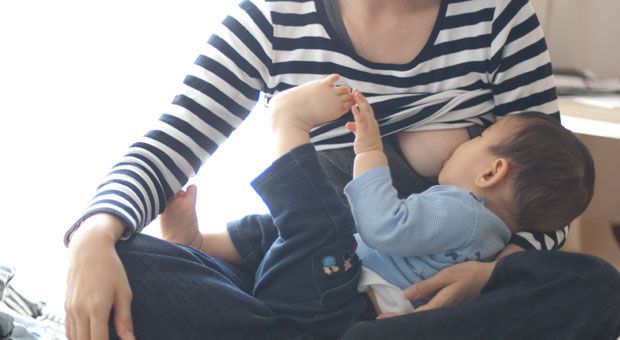You’ve gotta love Snooki…don’t you? This pint-size powerhouse doesn’t pull any punches. Case in point: The former Jersey Show star (real name Nicole Polizzi) recently gave birth to a little girl, Giovanna Marie, and unsurprisingly the new mom had her own unique spin on the joys (and challenges) of motherhood. "I am literally a walking zombie," she told her Podcast One listeners. "Thank God I have these permanent fake eyelashes on, because if I didn't, I would look like hell.”
But the biggest pain for the reality icon: breastfeeding. A beautiful thing…except when it isn’t. "My boobs are killing me,” she says. “I feel like my nipples are going to fall off." According to the American College of Obstetricians and Gynecologists (ACOG), breastfeeding shouldn't hurt after the first week. But if it does, there are things you can do to improve your technique and relieve soreness. (If pain or breastfeeding problems persist, talk to your doctor or a lactation specialist.)
RELATED: 10 Myths and Facts About Breastfeeding
So for Snooki, and all the other breastfeeding moms out there (according to recent stats, there’s a lot of them: almost 80% of infants born in 2011 started to breastfeed), try these 6 tips from ACOG to help prevent breast pain.
Help baby get a grip
To prevent nipple soreness in the first place, make sure the little one isn't sucking mostly on the nipple (yow!). Position the baby so her head is tilted up and aim the nipple toward the roof of her mouth so that when she latches on, her mouth will cover a good deal of the areola (the colored, circular area around the nipple). If the baby isn't latched on well, break the suction and try again (below).
Break the seal
If you need to reposition or switch breasts, break suction carefully before trying to pull the baby off. The trick: Slip a clean finger in between baby’s gums, then wait until you feel or hear a pop.
Switch things up
When your mammary glands are full of milk, your breasts can feel hard and tender, which is known as engorgement. To relieve the pain, try nursing more often—in about a week, your body should adjust milk production to match what your baby needs. And don't forget to alternate which breast you offer first at each feeding, since the baby may not feed at both.
Keep it moving
If you have sore nipples, switching up breastfeeding positions to may help (for example, you can try the “cradle hold,” “football hold,” and “the cross-over hold").
Soothe dry nipples
Massaging a few drops of breast milk on dry, cracked nipples may help speed the healing process.
Bring the heat
If you get a blocked or inflamed milk duct—usually caused by a backup of unused milk—it can cause a sore red patch on your breast. To get things flowing again, try feeding often on the breast that's blocked. If the duct isn't drained it could lead to mastitis, an infection that can result in painful, swollen breasts—and, possibly, flu-like symptoms including fever, aches, and fatigue. Taking warm showers or placing warm compresses directly on the area between feedings can bring down soreness.
RELATED: 10 Ways to Boost Your Odds of Getting Pregnant
